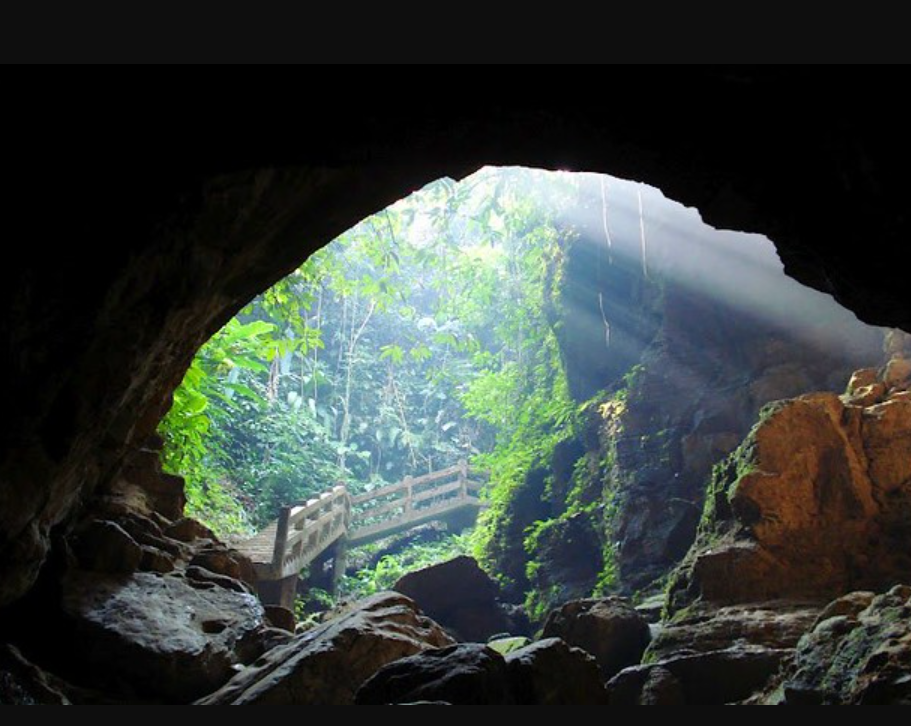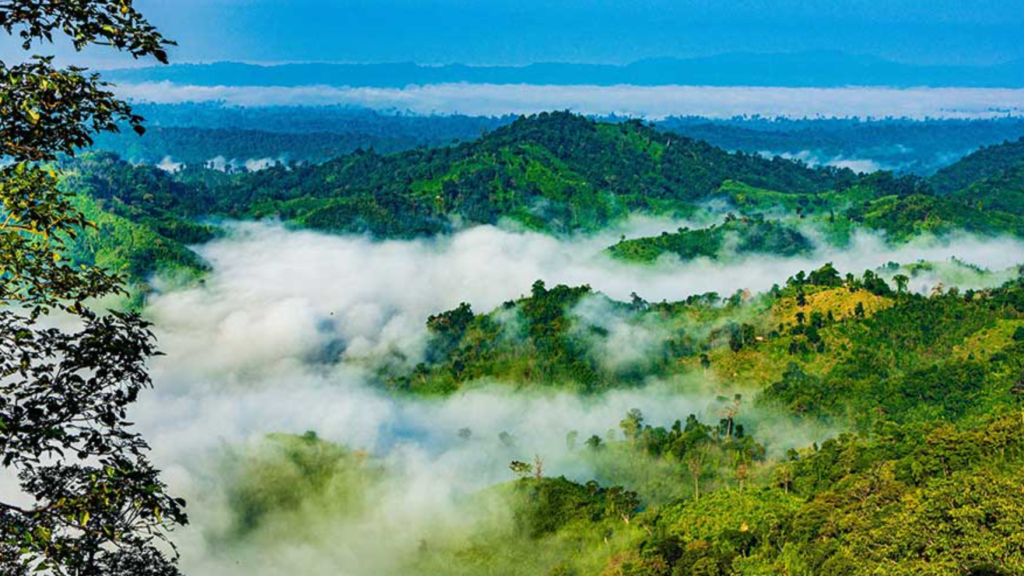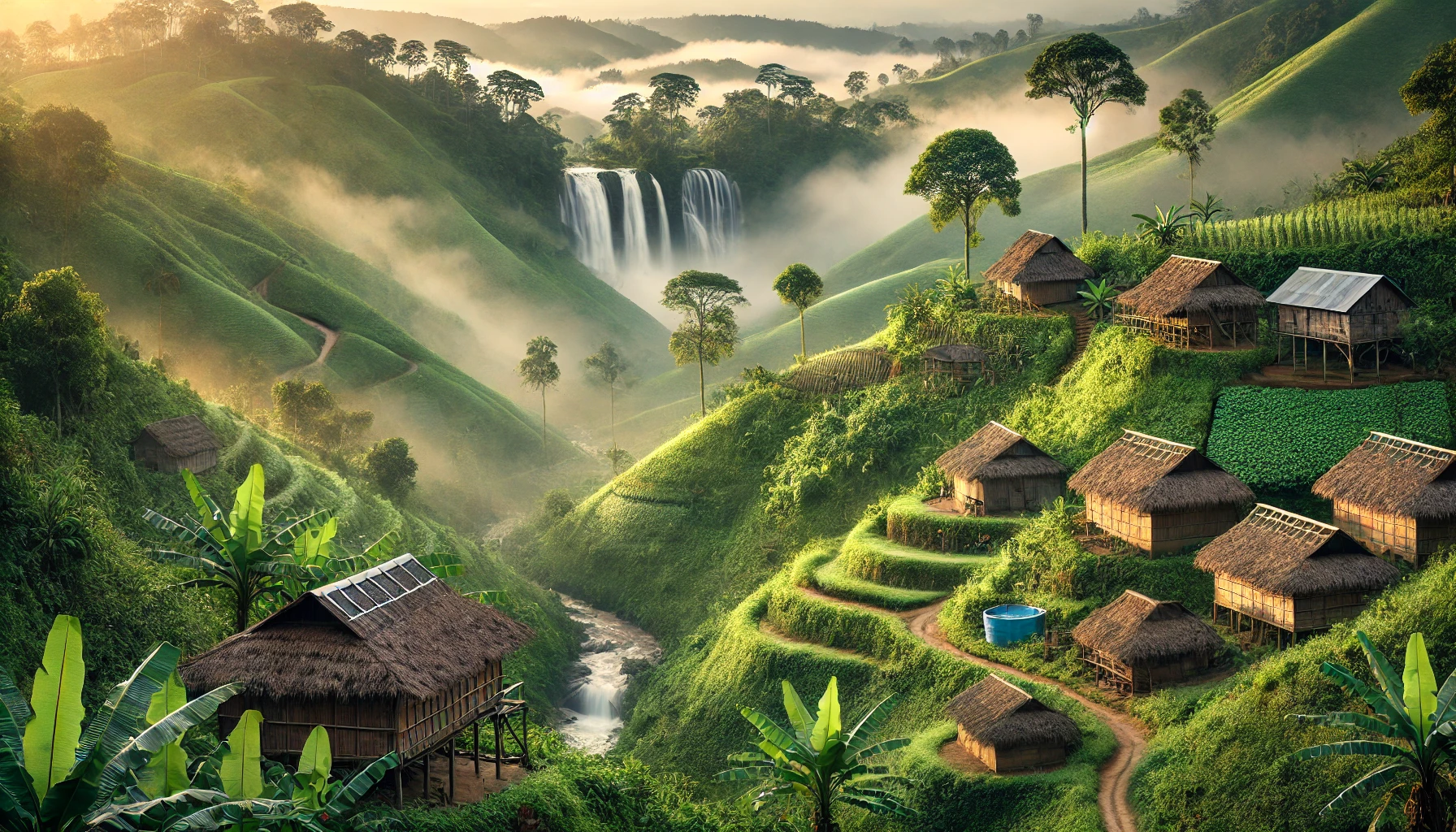Khagrachhari, often referred to as the “Hill Queen” of Bangladesh, is a district brimming with natural beauty, cultural diversity, and vibrant traditions. Located in the Chattogram Hill Tracts, it offers a unique blend of serene landscapes and dynamic cultures, making it a treasure trove of experiences for travelers, historians, and nature enthusiasts alike. From mist-covered hills and cascading waterfalls to the rich traditions of indigenous communities, Khagrachhari invites visitors to explore its scenic charm, engage with its diverse cultural tapestry, and experience the harmonious coexistence of tradition and modernity.
The Geography and Scenic Charm of Khagrachhari
Nestled amidst rolling hills and lush greenery, Khagrachhari is a paradise for those seeking tranquility and adventure. The district is surrounded by the Chengi, Maini, and Feni Rivers, which cut through the valleys, creating a striking interplay of hills and water. The dense forests are home to exotic flora and fauna, making it a destination for eco-tourists and wildlife enthusiasts.
Natural Attractions

Alutila Hill and Cave
- Alutila Hill and Cave: One of Khagrachhari’s most famous tourist spots, Alutila Hill offers panoramic views of the surrounding landscape. Beneath it lies the Alutila Cave, a thrilling site for adventurers with its mysterious dark passages and cool atmosphere.
- Richhang Waterfall: Hidden amidst dense greenery, this waterfall is a serene retreat where visitors can enjoy the soothing sound of water cascading down the rocks.
- Sajek Valley: Although administratively part of Rangamati, Sajek Valley’s proximity to Khagrachhari makes it a must-visit destination for visitors. Known as the “Roof of Rangamati,” Sajek offers breathtaking views of hills shrouded in mist, vibrant indigenous villages, and some of the best sunrise and sunset spots in the region.
Cultural Tapestry: The Indigenous Communities of Khagrachhari
Khagrachhari is home to a diverse array of indigenous communities, including the Chakma, Marma, Tripura, and others. Each community has its own language, traditions, and festivals, contributing to the rich cultural fabric of the district.
Cultural Highlights
- Festivals: Boishabi, celebrated during the Bengali New Year, is the most prominent festival in Khagrachhari. This multi-community celebration includes water games, traditional music, and delicious feasts.
- Art and Handicrafts: The indigenous communities are skilled artisans, creating intricate textiles, bamboo crafts, and pottery. These items are not just products but representations of their heritage and way of life.
- Cuisine: Local dishes like “bamboo shoot curry” and “sticky rice with smoked fish” are unique culinary experiences that reflect the district’s distinct cultural identity.
Administrative Divisions: The Upazilas of Khagrachhari
Khagrachhari District is divided into nine upazilas, each offering its own unique charm and characteristics:
- Khagrachhari Sadar:
- The administrative and cultural heart of the district, it houses key attractions like Alutila Tourist Complex and Buddhist temples.
- Dighinala:
- Famous for the Sajek Valley and the Maini River, it’s a hub for tourism with serene landscapes and vibrant indigenous culture.
- Lakshmichhari:
- A remote area known for its dense forests and traditional villages, providing visitors with a glimpse into indigenous lifestyles.
- Mahalchhari:
- Renowned for its agricultural activities, especially pineapple cultivation, and its tranquil environment.
- Manikchhari:
- A unique blend of Bengali and indigenous cultures, this upazila is a hub for small-scale industries and local businesses.
- Matiranga:
- Known for its fertile lands, it contributes significantly to the district’s agricultural output.
- Panchhari:
- A peaceful upazila with small hills, ideal for eco-tourism and leisure activities.
- Ramgarh:
- A historically significant border town, it features scenic beauty and diverse communities.
- Guimara:
- The newest upazila, offering untapped natural beauty and potential for eco-tourism.
The Economic Backbone of Khagrachhari
Agriculture dominates the economy of Khagrachhari, with the district producing a variety of crops like pineapples, bananas, ginger, and turmeric. These crops are not only consumed locally but also contribute significantly to the national economy.
Forests in Khagrachhari are another vital resource, supplying timber, bamboo, and other materials. With the growth of tourism, local artisans and small businesses have found new opportunities to thrive, showcasing their crafts and traditions to visitors.
Tourism in Khagrachhari: A Growing Industry
Khagrachhari is rapidly becoming a major tourism destination in Bangladesh. Its natural and cultural attractions, coupled with the hospitality of its people, make it an ideal getaway for travelers. Popular tourist spots include:

Sajek Valley
- Sajek Valley: A dream destination for nature lovers and photographers, known for its rolling clouds and vibrant tribal settlements.
- Alutila Cave and Hill: Perfect for adventurers and those seeking panoramic views of Khagrachhari.
- Richhang Waterfall: A serene spot to relax and enjoy the beauty of nature.
- Dighinala Hanging Bridge: A unique structure offering stunning views of the river and hills.
- Horticulture Park: A delightful park showcasing the district’s rich biodiversity.
Life in Khagrachhari: A Blend of Tradition and Modernity
Despite modernization and development, life in Khagrachhari retains its traditional charm. The locals, both indigenous and Bengali, coexist harmoniously, sharing cultural practices and mutual respect. The region has seen significant progress in education, healthcare, and infrastructure, but its natural and cultural heritage remains untouched.
How to Reach Khagrachhari
Khagrachhari is easily accessible from major cities in Bangladesh:
- By Road: Regular bus services connect Khagrachhari to Dhaka, Chattogram, and Rangamati.
- By Air: The nearest airport is in Chattogram, from where visitors can take a bus or private car to reach the district.
Best Time to Visit
The best time to visit Khagrachhari is during the cooler months of November to February, when the weather is pleasant and the hills are lush and inviting.
Final Thoughts
Khagrachhari is a district that perfectly balances nature, culture, and adventure. Whether you’re trekking through the Alutila Cave, soaking in the misty views of Sajek Valley, or learning about the traditions of its indigenous communities, every experience in Khagrachhari is one to cherish. For travelers seeking tranquility, cultural immersion, or a taste of adventure, Khagrachhari is a destination that promises to captivate and inspire.




